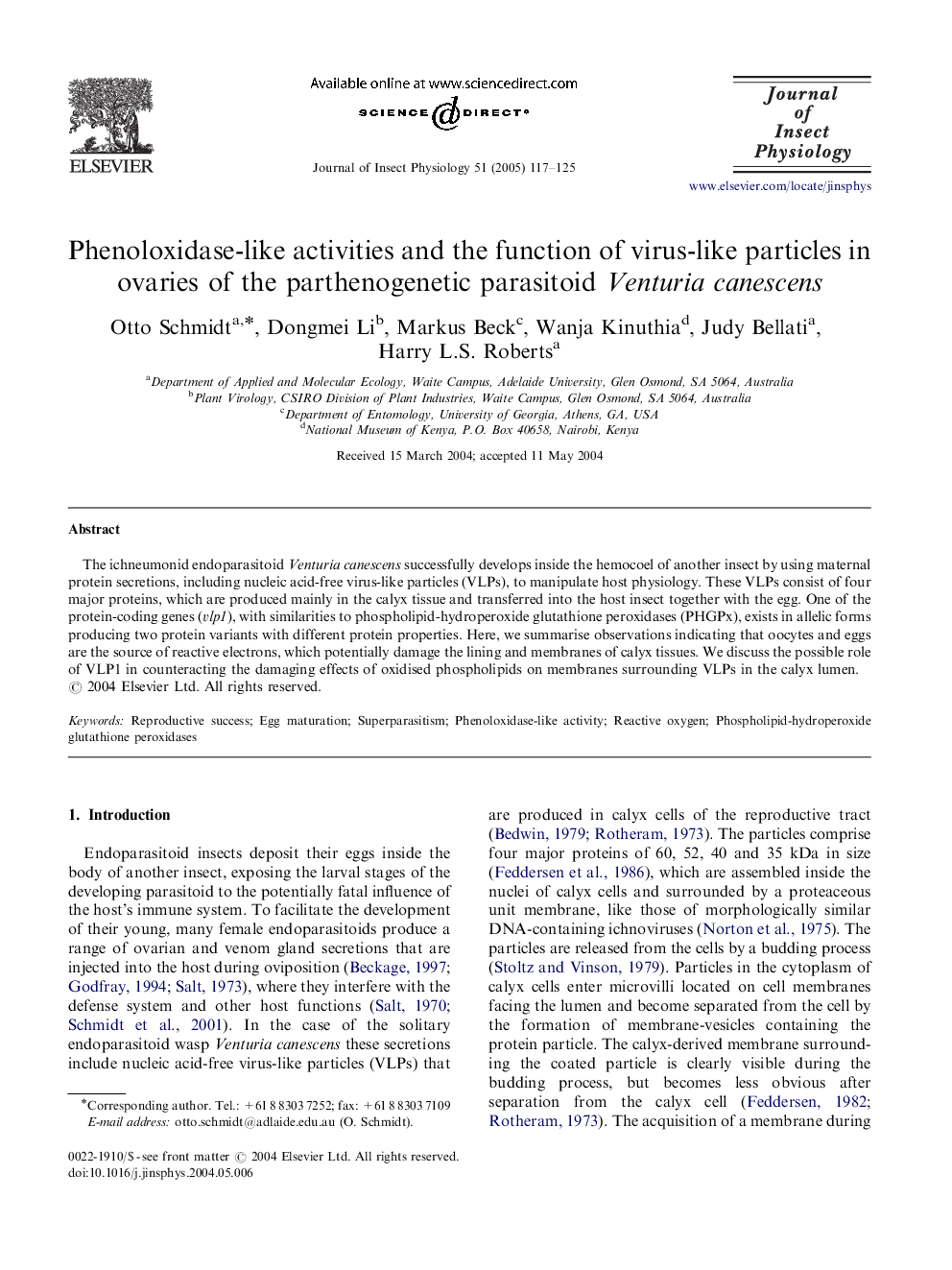| Article ID | Journal | Published Year | Pages | File Type |
|---|---|---|---|---|
| 9147220 | Journal of Insect Physiology | 2005 | 9 Pages |
Abstract
The ichneumonid endoparasitoid Venturia canescens successfully develops inside the hemocoel of another insect by using maternal protein secretions, including nucleic acid-free virus-like particles (VLPs), to manipulate host physiology. These VLPs consist of four major proteins, which are produced mainly in the calyx tissue and transferred into the host insect together with the egg. One of the protein-coding genes (vlp1), with similarities to phospholipid-hydroperoxide glutathione peroxidases (PHGPx), exists in allelic forms producing two protein variants with different protein properties. Here, we summarise observations indicating that oocytes and eggs are the source of reactive electrons, which potentially damage the lining and membranes of calyx tissues. We discuss the possible role of VLP1 in counteracting the damaging effects of oxidised phospholipids on membranes surrounding VLPs in the calyx lumen.
Related Topics
Life Sciences
Agricultural and Biological Sciences
Insect Science
Authors
Otto Schmidt, Dongmei Li, Markus Beck, Wanja Kinuthia, Judy Bellati, Harry L.S. Roberts,
